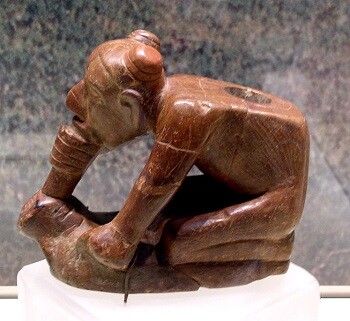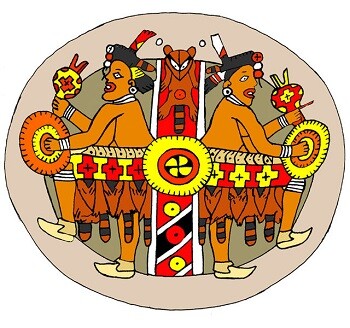If you’re from a part of the world that doesn’t bother to teach American Indian history in schools (and that includes every part of the US that’s more than a ten-minute drive from a casino) chances are you’ve never heard of the Mississippian Culture, a once-great American Indian civilization that spanned across almost a third of the continental United States. And even those lucky few in the know probably had its thousand-year history crammed into one middle school field trip to a landfill outside of East St. Louis.

St. Louis Public Radio
Not that there is much more time needed to tell the story of the Mississippian empire as most of its history has been scattered like so many corn husks in the wind. And while it’ll take historians decades to puzzle together some of the only remaining pieces, what we can do in the meantime at least is to question the when, what, why and who behind the disappearance of the Mississippian Culture. (Spoiler alert: It’s white people.)
5
The Mississippians Were Corn-Fed, God-Fearing Sports Fans
5
The Mississippians Were Corn-Fed, God-Fearing Sports Fans
It might be hard to wrap your head around a “Mississippian Culture” that doesn’t involve heated debates about the legality of riverboat pistol duels, but the ancient Mississippians actually had a surprising amount in common with the southerners who live there today. Leave aside the truck nuts and the hookworm and both of these sports watching, cookout lovin’, problematically religious southerners would’ve gotten along in an alternate universe.

While centuries separate the fall of the Mississippian Culture and the rise of the S-- let us rephrase that. Despite having had no contact with each other, it’s remarkable how Mississippian the native Mississippians really were. Like the South, the MC started as a loose collective of different settlements whose common ideals allowed them to form a confederac-- let us rephrase that. These tribes eventually melded into a cultural coalition built on the most important southern values: slaver -- maize. Between the fertile Mississippi riverbanks and the MC’s advanced agricultural techniques, so much of the yellow gold could be produced that Mississippians went from a nomadic to a tribal to a grand agrarian society faster than a scalded haint.
Even after everyone was as full as a tick, there was still plenty left to go around. Being the sharing kind, this allowed Mississippians to set up trade networks that brought back the most valuable riches from every corner of the continent. They received copper from the Great Lakes, jewels from the Sea of Cortez and even the most precious commodity of the Florida Keys: seashell necklaces. Equally important, the surplus of food allowed thousands of citizens to ditch the stone plows and become full-time artisans, taking great pride in turning these rare trade goods into some of the most coveted American Indian art ever seen.

So what was everyday life like for the average Mississippian? Most farmers and tradesfolk lived in either one-deer towns or neatly planned suburbs near the big cities. Whenever they weren’t running all over hell’s half acre, they’d spend their time dedicated to two pastimes: sports and religion. On holy days, Mississippians would go out in their Sun Day bests to attend worship held by their chieftain, the Brother of the Sun. There, they paid tribute to variations of what is now called the Southeastern Ceremonial Complex or “Southern Cult,” a shared series of religious practices focused on cosmology. It had also gathered a colorful collection of mythic beings from the corners of their empire, from lawful gods on high like Red Horn, AKA “He Who Wears Human Heads as Earrings” and the mighty thunderbirds to netherworld stirrers of chaos like the Corn Mother and the terrifying underwater panthers.
